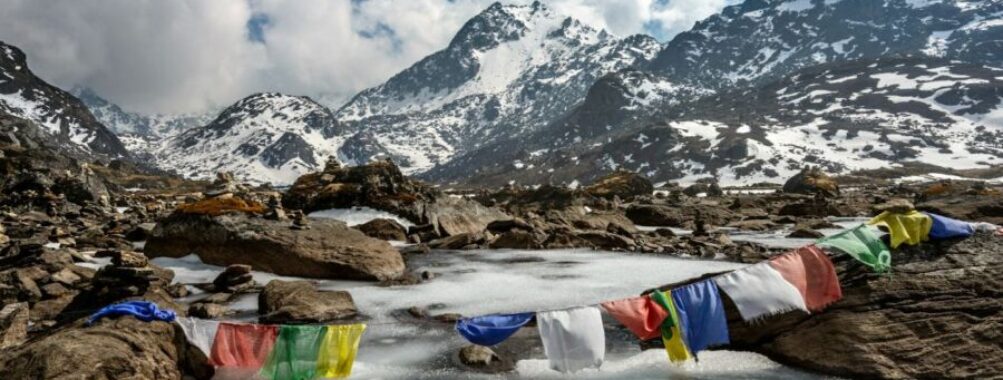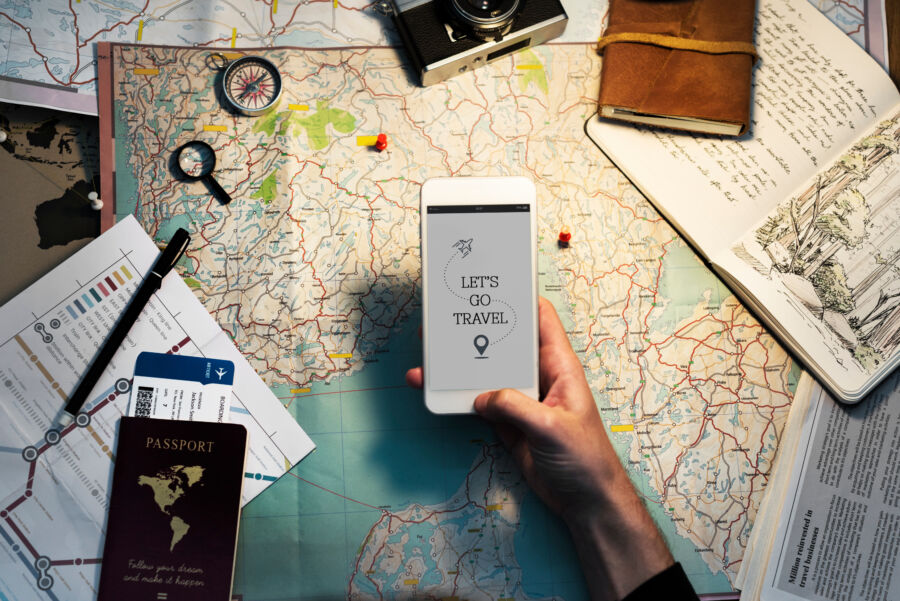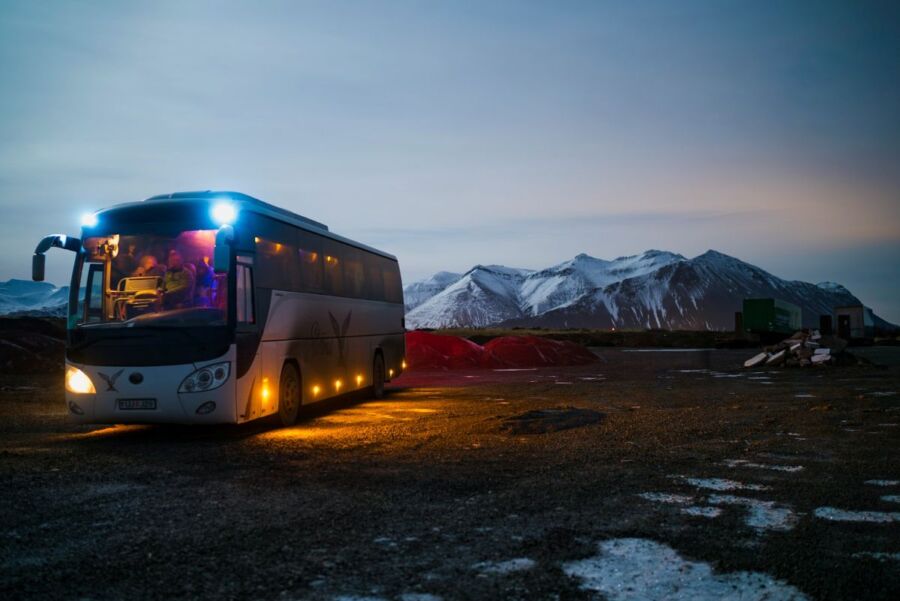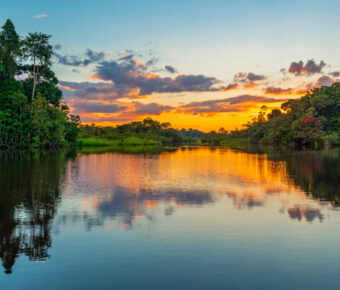
Mansarovar Trip Cost: Spiritual Journey Under $2000
Planning a trip to Kailash Mansarovar? Get ready for a life-changing spiritual journey that won’t break the bank. As a seasoned traveler, I’ve explored this sacred destination and can guide you through the costs. The Kailash Mansarovar Yatra typically costs between $2,750 and $3,500 per person. This price range covers most expenses for a 10-day pilgrimage, including travel, accommodations, and permits.
Your Mansarovar adventure will take you to breathtaking landscapes and holy sites. You’ll trek around Mount Kailash and dip in the sacred Lake Mansarovar. The trip is a mix of spiritual growth and physical challenge. It’s perfect for those seeking a deeper connection with nature and their faith.
Contents
- Key Takeaways
- Understanding the Kailash Mansarovar Yatra
- Significance of the Pilgrimage
- The Spiritual Importance of Mount Kailash
- Mansarovar Lake: A Holy Site
- Preparation and Travel Documentation
- Securing a Tibet Travel Permit
- Chinese Visa Requirements
- Application Forms and Required Documents
- Detailed Cost Breakdown
- Travel and Accommodation Expenses
- Entrance Fees and Permits
- Food and Miscellaneous Costs
- Route and Itinerary
- Traditional Kailash Parikrama
- Alternate Trekking Routes
- Itinerary Variations by Group Size and Type
- The Trekking Experience
- Physical Endurance and Health Considerations
- Hiring Yaks and Horses for Assistance
- Cultural Interactions along the Journey
- Tour Packages and Options
- Fixed Departure Dates and Costs
- Customizing a Private Tour
- Group Tours and NRI-Specific Packages
- Accommodations and Facilities
- Types of Accommodations Available
- Hotel and Guest House Costs
- Camping during the Kailash Yatra
- Transportation and Logistics
- Overland Travel Routes
- Helicopter Services and Their Costs
- Transportation Within Tibet
- More Travel Guides
Key Takeaways
- Costs range from $2,750 to $3,500 for a 10-day Kailash Mansarovar Yatra
- The journey combines spiritual experiences with stunning Himalayan scenery
- Proper planning and budgeting are crucial for a successful pilgrimage
Understanding the Kailash Mansarovar Yatra
The Kailash Mansarovar Yatra is a sacred journey that holds deep meaning for many faiths. This pilgrimage takes you to some of the most revered sites in Tibet, including the mighty Mount Kailash and the serene Mansarovar Lake.
Significance of the Pilgrimage
The Kailash Mansarovar Yatra is a powerful spiritual experience for Hindus, Buddhists, Jains, and Bon followers. It’s believed to cleanse your soul and bring you closer to enlightenment.
As you trek through the rugged Tibetan landscape, you’ll feel a deep connection to centuries of pilgrims who came before you. The journey isn’t just about reaching a destination – it’s about the inner transformation that happens along the way.
Many believe completing this yatra can free you from the cycle of rebirth. It’s a chance to reflect on your life and seek spiritual growth in a truly awe-inspiring setting.
The Spiritual Importance of Mount Kailash
Mount Kailash stands as a sacred peak that’s central to several religions. For Hindus, it’s the abode of Lord Shiva and his wife Parvati. Buddhists see it as the home of Buddha Demchok.
The mountain’s unique shape makes it stand out – it looks like a giant natural temple. As you circle the mountain on foot (called a kora), you’ll join pilgrims in a practice that’s thousands of years old.
Completing the 32-mile circuit around Kailash is said to wipe away your sins. It’s a challenging trek, but the breathtaking views and spiritual energy make it unforgettable.
Mansarovar Lake: A Holy Site
Lake Mansarovar sits at the base of Mount Kailash, a stunning blue jewel surrounded by snowy peaks. It’s one of the highest freshwater lakes in the world at over 15,000 feet.
For Hindus, taking a dip in Mansarovar’s icy waters is a sacred act that washes away negative karma. The lake is also tied to the creation story in Hindu mythology.
Buddhists believe the lake was the site of Buddha’s conception. Its perfectly round shape and crystal-clear waters make it a place of profound peace and beauty.
As you sit by the lakeshore, you might spot rare birds or wild animals. The quiet beauty of Mansarovar offers a chance for deep meditation and spiritual connection.
Preparation and Travel Documentation

Getting ready for your Mansarovar trip involves crucial paperwork. You’ll need to gather several important documents and permits before setting off on this spiritual journey.
Securing a Tibet Travel Permit
You can’t enter Tibet without a Tibet Travel Permit. This document is a must-have for your trip. To get it, you’ll need to book your tour through a licensed travel agency. They’ll handle the permit application for you.
The process usually takes about 15-20 days. Make sure to start early. Your travel agency will need your passport details and other info to apply. Once approved, you’ll get a paper copy of the permit.
Keep in mind that the rules can change. It’s best to check with your tour operator for the latest requirements.
Chinese Visa Requirements
Along with the Tibet Travel Permit, you’ll need a valid Chinese visa. You can apply for this at a Chinese embassy or consulate in your home country.
The visa application process can take a week or two. You’ll need to fill out forms and provide passport photos. Some embassies might ask for proof of your travel plans or hotel bookings.
Don’t mention Tibet on your visa application. Just list the Chinese cities you’ll visit before entering Tibet. Your travel agency can help you with the right wording.
Application Forms and Required Documents
Gathering all your paperwork can feel like a puzzle. Here’s what you’ll typically need:
- Passport (valid for at least 6 months)
- Chinese visa
- Tibet Travel Permit
- Alien’s Travel Permit (for areas outside Lhasa)
- Military Permit (for some border areas)
Your tour operator will help you get most of these. They’ll tell you what forms to fill out and what extra docs you might need.
Don’t forget to make copies of everything. It’s smart to keep digital copies too, just in case.
Detailed Cost Breakdown

Planning a Mansarovar trip can be tricky when it comes to budgeting. Let’s break down the major expenses you’ll encounter so you can prepare accordingly.
Travel and Accommodation Expenses
The biggest chunk of your budget will go towards getting there and staying comfy. Flights to Nepal or Tibet can set you back $500-$1000 depending on where you’re coming from. Once you’re there, you’ll need to shell out for local transport too – think jeeps and buses.
Accommodation costs vary wildly. Basic guesthouses might only charge $10-20 per night, while fancier hotels could be $50-100+. Don’t forget, you’ll be staying in different places as you move around.
Some tour packages bundle transport and lodging together. These can range from $1500 for a bare-bones group tour to $3000+ for a cushier private experience. Shop around to find the best deal for your style.
Entrance Fees and Permits
Red tape isn’t free, folks. You’ll need to budget for various permits and fees. The biggie is the Tibet Travel Permit – that’ll run you about $150-200.
Then there’s the Kailash Mansarovar special permit. Expect to pay another $150-180 for that. Smaller fees pop up too, like $25 for the Sagarmatha National Park entry.
Don’t forget about visa costs! A Chinese visa (for Tibet) is around $140, while a Nepal visa on arrival is $30-50 depending on your stay length.
Add it all up, and you’re looking at $500-600 just in paperwork. Ouch!
Food and Miscellaneous Costs
Gotta eat, right? Budget about $15-25 per day for meals. Local joints are cheap, but you might want some familiar grub now and then.
Other stuff to consider:
- Gear rental (if you didn’t bring your own): $50-100
- Tips for guides and porters: $5-10 per day
- Souvenirs: As much as your wallet allows!
- Emergency fund: Set aside $200-300 just in case
Don’t forget travel insurance! It’s a must for a trip like this. Expect to pay $50-150 depending on coverage.
These little costs add up fast. Plan for at least $500 in miscellaneous expenses to be safe.
Route and Itinerary

The Kailash Mansarovar Yatra offers various paths to reach the sacred mountain. Your journey can take different forms depending on your preferences and physical abilities. Let’s explore the main routes and itinerary options.
Traditional Kailash Parikrama
The classic Kailash Parikrama is a 52-km trek around Mount Kailash. You’ll start from Darchen, a small town at the base of the mountain. The trek usually takes 3 days, with stops at Dirapuk and Zuthulpuk monasteries.
You’ll cross the challenging Dolma La Pass at 5,636 meters. This is the highest and toughest part of the journey. Make sure to pack warm clothes and good hiking boots.
The route passes holy sites like Gauri Kund and Tarboche. You’ll see stunning views of the Kailash peak and nearby lakes. Many pilgrims consider this circuit a life-changing experience.
Alternate Trekking Routes
If you’re looking for a different adventure, try the Inner Kora route. It’s a more secluded path closer to Mount Kailash. This trek is harder and needs special permits.
Another option is the Kailash Mansarovar Yatra by helicopter. It’s pricier but saves time and physical effort. You’ll fly from Kathmandu to Nepalgunj, then to Simikot. From there, a chopper takes you to Hilsa near the Tibet border.
For a longer journey, you can start from Lhasa. This route lets you see more of Tibet, including famous monasteries and the Potala Palace. It takes about 15 days but offers a deeper cultural experience.
Itinerary Variations by Group Size and Type
Small group tours often follow a flexible 14-day itinerary. You’ll have more chances to adjust the pace and explore off-the-beaten-path spots. These tours might cost more but offer a more personal experience.
Larger groups usually stick to a fixed 12-day schedule. It’s cheaper but allows less flexibility. You’ll spend more time in buses and have stricter timelines at each stop.
Some tours focus on spiritual practices, with more time for meditation and rituals. Others emphasize sightseeing and photography. Pick a tour that matches your goals.
Budget tours might use basic guesthouses and local transport. Luxury options offer better hotels and private vehicles. Think about your comfort needs when choosing.
The Trekking Experience

The Kailash Mansarovar trek challenges your body and mind while offering unforgettable cultural encounters. You’ll face tough terrain and high altitudes, but the rewards are well worth it.
Physical Endurance and Health Considerations
Trekking to Kailash Mansarovar isn’t a walk in the park. You’ll need to be in good shape to handle long days of walking at high altitudes. The trek takes you up to 19,000 feet, where the air is thin and every step feels tougher.
Before you go, start training with long hikes and cardio workouts. Build up your stamina over several months. Once there, take it slow and listen to your body. Drink lots of water and eat well to keep your energy up.
Altitude sickness is no joke. You might get headaches or feel nauseous as you climb higher. Take time to acclimatize and don’t push yourself too hard. If you feel really bad, tell your guide right away.
Hiring Yaks and Horses for Assistance
Don’t worry if you’re not up for carrying all your gear. You can hire yaks or horses to lighten your load. These sturdy animals are pros at navigating the rocky paths.
Yaks are the traditional choice. They’re slow but steady and can carry a ton of stuff. Horses are faster but cost more. Either way, you’ll still need to walk – the animals just carry your bags.
Prices vary, but expect to pay about $20-30 per day for a yak or $40-50 for a horse. It’s worth every penny when you’re huffing and puffing up steep trails. Just remember to tip your yak herder or horse handler at the end.
Cultural Interactions along the Journey
Your trek isn’t just about the scenery. You’ll meet fascinating people and see unique cultures along the way. Tibetan villages dot the landscape, full of friendly locals eager to share their way of life.
Stop at tea houses for a warm drink and chat with other pilgrims. You might share a meal with a Sherpa family or join in a Buddhist prayer ceremony. These moments often become the highlight of the trip.
Don’t be shy – try to learn a few words of Tibetan. Even a simple “Tashi delek” (hello) will bring big smiles. Bring small gifts like pens or candy for the kids you meet. Just remember to always ask before taking photos of people.
Tour Packages and Options

Picking the right package for your Mansarovar trip can make or break your experience. You’ll find a range of choices to fit different budgets and travel styles.
Fixed Departure Dates and Costs
Most tour operators offer set dates for Kailash Mansarovar Yatra trips. They usually run from May to September when the weather is best. Prices vary, but you can expect to pay around $1,500 to $2,000 for a basic 10-day package. This typically covers:
- Transportation within Tibet
- Accommodation (mix of hotels and guesthouses)
- Meals
- Permits and entrance fees
- Guide services
Keep in mind that flights to Tibet are often not included. You’ll need to budget extra for those.
Customizing a Private Tour
A private tour might be your best bet if you want more flexibility. You can pick your dates and tailor the itinerary to your needs. This option is pricier, usually starting at $2,500 per person.
Benefits of a private tour:
- Choose your travel companions
- Adjust the pace to your liking
- Add extra activities or rest days
Remember, you’ll still need to follow permit rules and regulations set by Chinese authorities.
Group Tours and NRI-Specific Packages
Group tours are a popular and budget-friendly choice. You’ll travel with other pilgrims, often 15-20 people. These tours can cost as little as $1,200 for a basic package.
Some companies offer special deals for Non-Resident Indians (NRIs):
- Simplified visa process
- Cultural orientation
- Vegetarian meal options
Group sizes for NRI packages are often smaller, around 10-15 people. Prices range from $1,800 to $2,500, depending on the level of comfort and services included.
Accommodations and Facilities

Staying comfortable during your Kailash Mansarovar trip is key. You’ll find a range of options to suit different budgets and preferences. Let’s look at where you can rest your head each night.
Types of Accommodations Available
Your lodging will vary as you make your way to Mount Kailash. In Kathmandu, you can choose from basic guesthouses to 5-star hotels. As you get closer to Kailash, options become more basic. Tibetan towns like Saga and Darchen have simple hotels and guesthouses. Some have private bathrooms and hot water, while others are more rustic.
During the trek, you’ll stay in tents or basic guesthouses. Bring a warm sleeping bag – nights get cold! Some tour packages include better tents with cots. Always check what’s included before booking.
Hotel and Guest House Costs
Prices vary widely depending on comfort level and location. In Kathmandu, budget guesthouses start around $10-15 per night. Mid-range hotels run $30-50. Luxury options can cost $100+.
As you head into Tibet, prices generally drop. Basic guesthouses in towns like Saga cost $15-30 per night. Nicer hotels in Darchen might charge $40-60. Remember, comfort levels are lower than in big cities.
Some tours include all accommodations in the package price. If booking yourself, factor in about $20-40 per night on average for the whole trip.
Camping during the Kailash Yatra
For parts of the Kailash circuit, camping is your only option. Most tours provide tents, sleeping mats, and other gear. You’ll sleep in 2-person tents at designated campsites. Larger group tours often have a dining tent and toilet tent too.
Camping can be tough if you’re not used to it. Nights are cold and facilities are very basic. But it’s also an amazing way to experience the stunning landscape. Nothing beats waking up to views of Mount Kailash!
If camping isn’t your thing, look for tours that use guesthouses where possible. You’ll still need to camp for 1-2 nights, but it reduces the total camping time.
Transportation and Logistics

Getting to Mount Kailash and Lake Mansarovar can be tricky. You’ll need to plan your route carefully and budget for different travel options. Let’s look at the main ways to reach this remote area and get around once you’re there.
Overland Travel Routes
The overland journey to Kailash is an adventure in itself. You’ll likely start in Kathmandu, Nepal or a major Chinese city. From Kathmandu, you’ll cross the Nepal-Tibet border at Kerung County. The drive takes you through stunning Himalayan landscapes.
Expect bumpy roads and long travel days. You’ll pass through towns like Saga and Shigatse. A typical route might look like:
Kathmandu → Nepal-Tibet Border → Saga → Darchen
The trip usually takes 4-5 days one-way. You’ll travel in rugged 4WD vehicles built for the harsh terrain. Budget about $500-$800 for transportation costs on this route.
Helicopter Services and Their Costs
If you’re short on time or want to avoid the long drive, helicopter services are available. These usually fly from Kathmandu or Nepalgunj to Simikot. From there, you’ll take a short flight to Hilsa near the Tibet border.
Helicopter costs vary but expect to pay around $2000-$3000 per person for a round trip. It’s pricey, but you’ll save several days of travel time. Plus, the aerial views are breathtaking!
Keep in mind that weather can delay flights. Build some extra time into your schedule just in case.
Transportation Within Tibet
Once you reach Darchen, the base for Kailash treks, you’ll need local transport. Most tour packages include jeeps or minibuses for getting around. These will take you to key sites like Lake Mansarovar and the starting points for your Kailash trek.
For the actual Kailash circuit, you’ll be on foot. Some pilgrims hire yaks or horses to carry gear. You can arrange this with your tour guide. Hiring a yak or horse costs about $30-$50 per day.
In Tibetan towns, you might use local taxis for short trips. These are usually very affordable, costing just a few dollars per ride.



